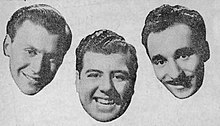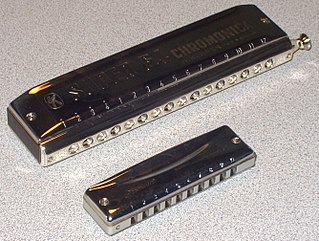
The harmonica, also known as a French harp, mouth harp or mouth organ, is a free reed wind instrument used worldwide in many musical genres, notably in blues, American folk music, classical music, jazz, country, and rock. The many types of harmonica include diatonic, chromatic, tremolo, octave, orchestral, and bass versions. A harmonica is played by using the mouth to direct air into or out of one holes along a mouthpiece. Behind each hole is a chamber containing at least one reed. The most common is the diatonic Richter-tuned with ten air passages and twenty reeds, often called the blues harp. A harmonica reed is a flat, elongated spring typically made of brass, stainless steel, or bronze, which is secured at one end over a slot that serves as an airway. When the free end is made to vibrate by the player's air, it alternately blocks and unblocks the airway to produce sound.
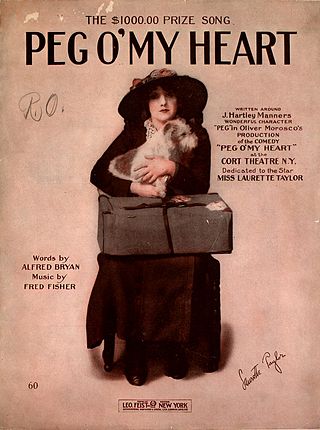
"Peg o' My Heart" is a popular song written by Alfred Bryan (words) and Fred Fisher (music). It was published on March 15, 1913 and it featured in the 1913 musical Ziegfeld Follies.

"Foggy Mountain Breakdown" is a bluegrass instrumental, in the common "breakdown" format, written by Earl Scruggs and first recorded on December 11, 1949, by the bluegrass artists Flatt & Scruggs and the Foggy Mountain Boys. It is a standard in the bluegrass repertoire. The 1949 recording features Scruggs playing a five-string banjo.

Jean-Baptiste Frédéric Isidor, Baron Thielemans, known professionally as Toots Thielemans, was a Belgian jazz musician. He was mostly known for playing the chromatic harmonica, as well as his guitar and whistling skills, and composing. According to jazz historian Ted Gioia, his most important contribution was in "championing the humble harmonica", which Thielemans made into a "legitimate voice in jazz". He eventually became the "preeminent" jazz harmonica player.
Wing Records was a record label subsidiary of Mercury Records founded in 1955, that found its greatest success during the late 1950s.

Hohner Musikinstrumente GmbH & Co. KG is a German manufacturer of musical instruments, founded in 1857 by Matthias Hohner (1833–1902). It is a subsidiary of Matth. Hohner AG. The roots of the Hohner firm are in Trossingen, Baden-Württemberg. Hohner has manufactured a wide range of instruments, such as harmonicas, kazoos, accordions, recorder flutes, melodicas, banjos, electric, acoustic, resonator and classical guitars, basses, mandolins and ukuleles. Hohner is known mostly for its harmonicas.

The Richter-tuned harmonica, 10-hole harmonica or blues harp, is the most widely known type of harmonica. It is a variety of diatonic harmonica, with ten holes which offer the player 19 notes in a three-octave range.

A button accordion is a type of accordion on which the melody-side keyboard consists of a series of buttons. This differs from the piano accordion, which has piano-style keys. Erich von Hornbostel and Curt Sachs categorize it as a free reed aerophone in their classification of instruments, published in 1914. The sound from the instrument is produced by the vibration of air in reeds. Button accordions of various types are particularly common in European countries and countries where European people settled. The button accordion is often confused with the concertina; the button accordion's buttons are on the front of the instrument, where as the concertina's are on the sides and pushed in parallel with the bellows.
Milton Tasker "Bill" Putnam was an American audio engineer, songwriter, producer, studio designer, and businessman. He has been described as "the father of modern recording". He was the inventor of the modern recording console and is recognized as having been a key figure in the development of the postwar commercial recording industry.
Plas John Johnson Jr. is an American soul-jazz and hard bop tenor saxophonist, probably most widely known as the tenor saxophone soloist on Henry Mancini’s "The Pink Panther Theme". He also performs on alto and baritone sax as well as various flutes and clarinets.

Man-Child is the fifteenth studio album by jazz pianist Herbie Hancock. The record was released on August 22, 1975 by Columbia Records. It was the final studio album to feature The Headhunters, and a number of guest musicians including saxophonist Wayne Shorter, a full brass section, three different guitarists, and Stevie Wonder on harmonica.

Borrah Minevitch was a Russian-American harmonica player, comic entertainer, entrepreneur, and leader of his group The Harmonica Rascals.

Truly Fine Citizen is the fourth studio album by American rock band Moby Grape. It was released on July 30, 1969, by Columbia Records. After completing the album, the band went on hiatus until 1971 when they reunited with Skip Spence and Bob Mosley to record the reunion album, 20 Granite Creek.

John Lennon's musical instruments were both diverse and many, and his worldwide fame resulted in his personal choices having a strong impact on cultural preferences.
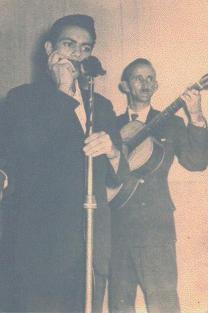
Angelo Dos Santos is a Brazilian harmonica player.
Universal Recording Corporation was a recording studio in Chicago founded by Bill Putnam, Sr. for the purpose of investigating new recording techniques and the development of specialized recording equipment.
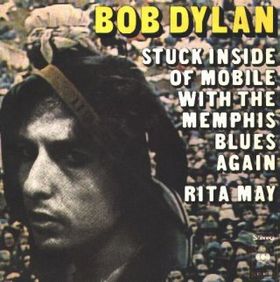
"Rita May" is a song by Bob Dylan, originally recorded during the sessions for the album Desire, but released only as the B-side of a single and on the compilation album, Masterpieces. The song is based on the 1957 rockabilly song "Bertha Lou". Some listeners believe that the lyrics of the song refer to writer Rita Mae Brown, who had complained of the lack of opportunities for casual lesbian sex.
Stanley Harper(néStanley Theodore Wisser; 2 September 1921 – 29 June 2016) was an American virtuoso classical harmonica artist, arranger, and composer. He died June 29, 2016, in a home for the elderly in New Jersey. He raised the popularity of classical harmonica by influencing composers to write for the instrument and by transcribing serious classical works, himself. Through his virtuosity, he widened the recognition of classical harmonica in solo, chamber, and major orchestral settings.
"Ruby" is the 1952 theme song for the film Ruby Gentry starring Jennifer Jones, written by Mitchell Parish and Heinz Roemheld. There were six charted versions of the song in 1953.
The Cambridge Harmonica Orchestra was a unique ensemble that grew to include more than 300 harmonica players. Founded by Otis Read, the Cambridge Harmonica Orchestra was directed by Pierre Beauregard and active from 1981 through 1986. They performed a wide range of Jazz and Blues harp as well as classical and popular tunes.
